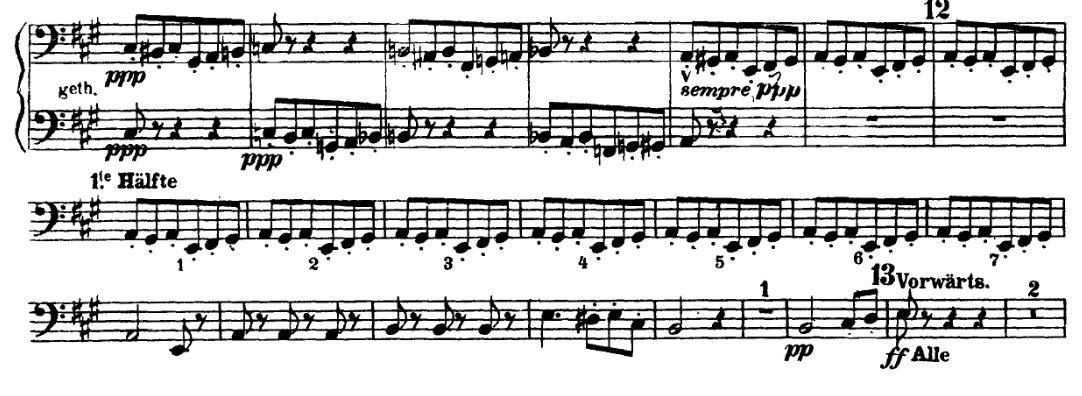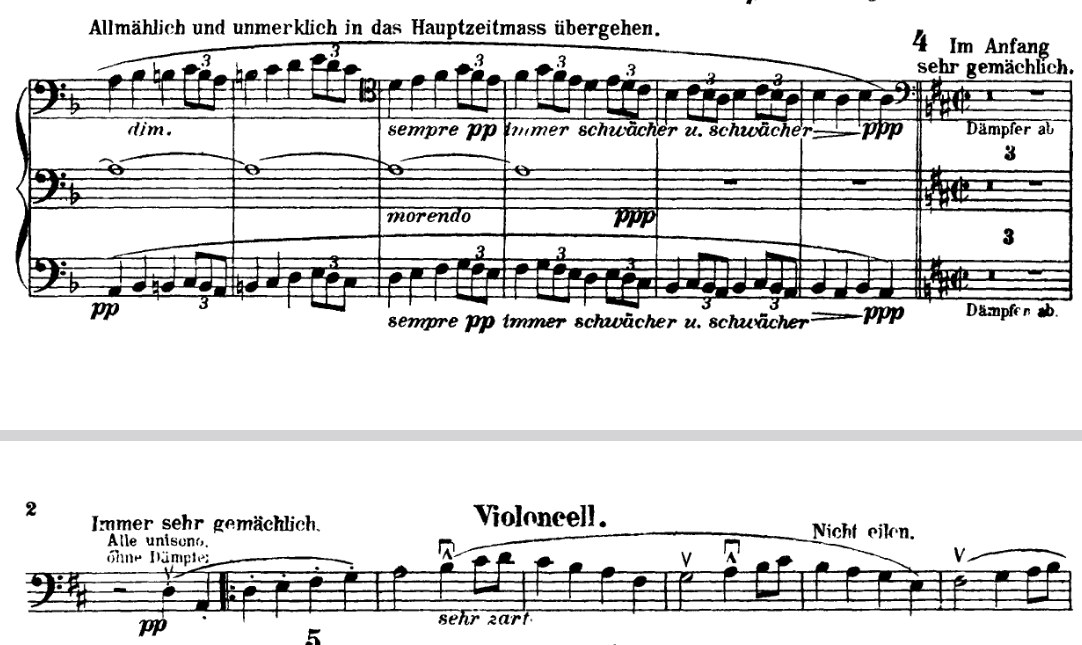Page 1 of 1
divisi to non-divisi notation in strings
Posted: 17 Sep 2023, 17:37
by MichelRE
here's a quicky question:
I have a one-measure (give or take a beat) passage where the 1st violins divide into two independent parts.
During that single measure, the outside desks don't play (whole bar rest) while the inner desks play in unison with violas.
The next measure, 1st violins go back to a unisono tutti.
Normally, after a divided passage, I'd write "unis." above the part to indicate that it is no longer divided.
But in this particular case, the previous bar was basically "la meta", then the next bar is "tutti".
So does the "tutti" take precedence over the "unisono"?
or should I indicate "tutti unis."?
Re: divisi to non-divisi notation in strings
Posted: 17 Sep 2023, 20:01
by David Ward
I would write tutti unis.
Re: divisi to non-divisi notation in strings
Posted: 17 Sep 2023, 20:59
by hautbois baryton
I tend to stack them vertically.
tutti
unis.
Re: divisi to non-divisi notation in strings
Posted: 17 Sep 2023, 22:48
by MichelRE
would either of you think that the bar with only inside desks having a whole note rest for the outside desks would still make "tutti unis." necessary?
Re: divisi to non-divisi notation in strings
Posted: 18 Sep 2023, 10:46
by David Ward
Necessary? Possibly not; but then maybe yes. ie Unequivocal if you do have it.
Re: divisi to non-divisi notation in strings
Posted: 18 Sep 2023, 19:47
by OCTO
I had recently the similar case and yes,
tutti unis. is perfectly clear to understand.
Tutti, because they all play now;
Unis, because they are now united and not divided into play/rest division.
MichelRE wrote: ↑17 Sep 2023, 22:48
would either of you think that the bar with only inside desks having a whole note rest for the outside desks would still make "tutti unis." necessary?
If they were not divided before, I feel it would not be necessary, just make more confusion;
la metà is frankly speaking enough.
Re: divisi to non-divisi notation in strings
Posted: 19 Sep 2023, 16:08
by MalteM
I just played Mahler’s 1st symphony. He writes very clearly what he wants (although in german):

- Bildschirmfoto vom 2023-09-19 18-03-00.png (214.85 KiB) Viewed 15761 times
The cellos are “geth.” = “getheilt” = “divisi”, then in the second line only the “1te Hälfte” = “1st half” continues. At rehearsal mark 13 “Alle” play which simply translates to “tutti”. As you can see he also writes double stems on that first note of tutti for first and second half of the cello section although they play in unison (not only in that measure but also in the following).
Re: divisi to non-divisi notation in strings
Posted: 19 Sep 2023, 16:14
by MalteM
Oh, and now I looked at the first movement. The introduction is “getheilt zu drei gleichen Theilen” = “divided into three equal parts”. The main theme after the introduction starts “Alle unisono” = “tutti unisono”.

- Bildschirmfoto vom 2023-09-19 18-12-22.png (291.65 KiB) Viewed 15760 times
Re: divisi to non-divisi notation in strings
Posted: 19 Sep 2023, 20:07
by NeeraWM
Yes, "tutti, unis." (with the comma imho) is the best for the unison bar.
For the divisi bar you have several options:
1. use bar rest in up-stem voice to silence first desk/division, and write music in down-stem voice
2. write normally and then it depends from the language you are using: I can't speak for German, but you would use "inner desk" or "desk 2" if in English, "la metà" in Italian is good, but what half would that imply? As an Italian, "la metà interna" is something that would make sense grammatically but that I've never seen anywhere. "Gli interni" would make more sense, maybe, since when you decide the division you say "gli esterni..." and then "gli interni..."